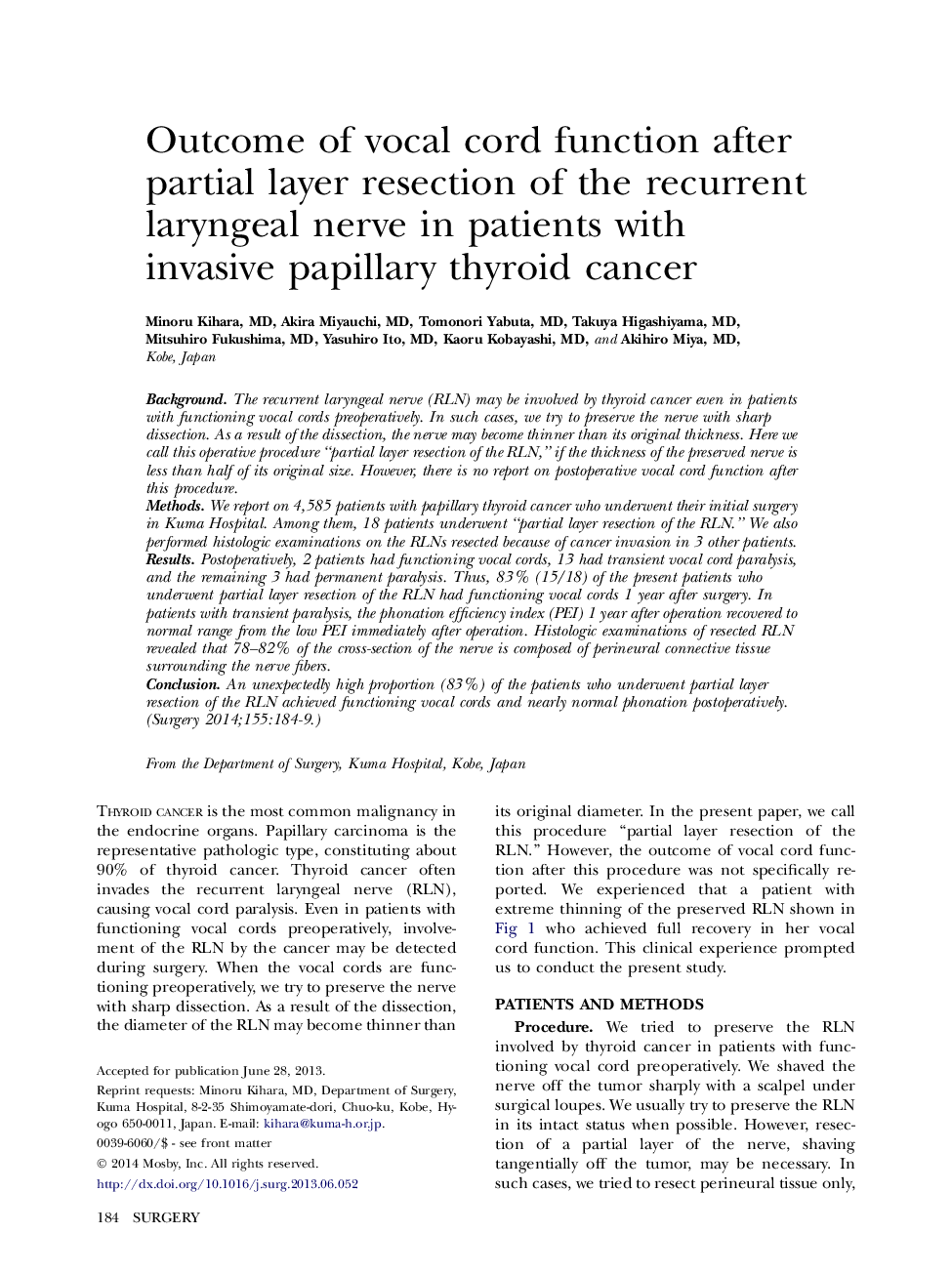| Article ID | Journal | Published Year | Pages | File Type |
|---|---|---|---|---|
| 4306873 | Surgery | 2014 | 6 Pages |
BackgroundThe recurrent laryngeal nerve (RLN) may be involved by thyroid cancer even in patients with functioning vocal cords preoperatively. In such cases, we try to preserve the nerve with sharp dissection. As a result of the dissection, the nerve may become thinner than its original thickness. Here we call this operative procedure “partial layer resection of the RLN,” if the thickness of the preserved nerve is less than half of its original size. However, there is no report on postoperative vocal cord function after this procedure.MethodsWe report on 4,585 patients with papillary thyroid cancer who underwent their initial surgery in Kuma Hospital. Among them, 18 patients underwent “partial layer resection of the RLN.” We also performed histologic examinations on the RLNs resected because of cancer invasion in 3 other patients.ResultsPostoperatively, 2 patients had functioning vocal cords, 13 had transient vocal cord paralysis, and the remaining 3 had permanent paralysis. Thus, 83% (15/18) of the present patients who underwent partial layer resection of the RLN had functioning vocal cords 1 year after surgery. In patients with transient paralysis, the phonation efficiency index (PEI) 1 year after operation recovered to normal range from the low PEI immediately after operation. Histologic examinations of resected RLN revealed that 78–82% of the cross-section of the nerve is composed of perineural connective tissue surrounding the nerve fibers.ConclusionAn unexpectedly high proportion (83%) of the patients who underwent partial layer resection of the RLN achieved functioning vocal cords and nearly normal phonation postoperatively.
